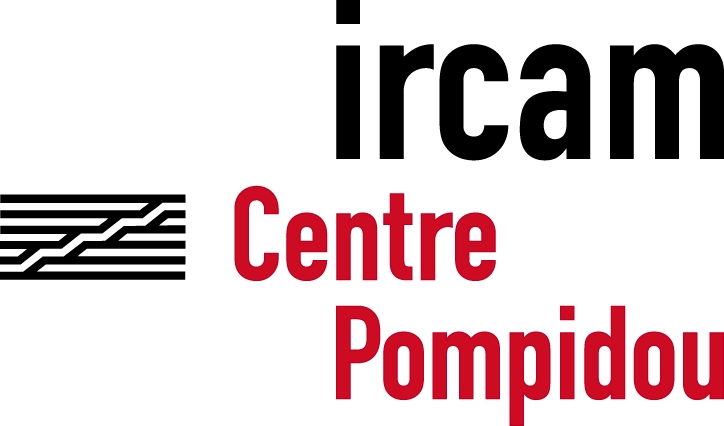PhD Thesis
Kevin SANLAVILLE, 2013-2016
Title: Temporal adaptation of interaction (STMS-LTCI)
Supervisors: C. Pelachaud, F. Bevilacqua and G. Assayag
Abstract: The objective of this thesis is to develop an adaptive and proactive management of the interaction system. The goal is to push back the limits of standard and traditional approaches that are static and determined beforehand. The stakes are therefore to propose a real-time adaption of the representations of interaction, taking into account the different time scales of interactions. This means recognizing and adapting short-term phenomena (reactions, synchronization) and long-term phenomena by updating multi-scale and hierarchical representation of interaction (involving cognitive or mental state representations). The thesis will use the knowledge, models and systems that are for the moment developed in separate areas: conversational agent, musical improvisation and interaction ("autonomous creative agents").
Thomas JANSSOONE, 2014-2017
Title: Multimodal analysis and recognition of social signals: application to social stance generation in virtual agents (ISIR-LTCI)
Supervisors: G. Richard, C. Clavel and K. Bailly
Abstract: The aim of this thesis is to carry out research on the analysis of visual features (facial expression and head movements, see Nicolle & Bailly, 2012) and audio features (linguistic and prosodic, see Clavel & Richard, 2011) characterising social stances, such as dominance (Burgoon, 1999) (Ravenet, Ochs & Pelachaud, 2013) . In particular, the PhD will study the various timing and sequencing of the features coming from the different modalities. The long run goal is to integrate these features in a model for the production of social stances in an Embodied Conversational Agents (ECA).
Wenlu YANG, 2014-2017
Title: Embedded architecture and physiological sensors
Supervisors: C. Marsala, M. Rifqi and A. Pinna
Abstract: The originality of this thesis is the design of the most appropriate embedded architecture implementing dynamic learning techniques on physiological signals (EDA, EEG, ECG, EMG, ...) to automatically recognize emotions. The objective is to obtain an architecture that reacts as closer as possible to a particular person. For this, the machine learning algorithm must automatically adapt to new physiological data it receives to implement automatic recognition of a mental state. The automatic adaptation of the learning algorithm to these changes is an emerging problem and challenges of the thesis are to design algorithms and architectures: embedded, effective execution speed and memory space; capable of integrating new descriptors, as well as new classes (new mental states); capable of detecting abrupt changes or breaks without confusing them with noise; able to follow developments and remaining robust and therefore knowing control oblivion. These challenges will be validated in several scenarios, such as video games, coaching, professional training and events.
Sheng FANG, 2015-2018
Title: Study of social cues exchanged during natural interactions
Supervisors: C. Achard and S. Dubuisson
Abstract: The objective of this thesis is to create a model of interaction between people and to estimate the quality of this latter, as well as its strengths and its weaknesses. This multimodal (speech, face, gestures, posture ...), dynamical (changing with time) and hierarchical (different levels of characterization: gestures, facial orientation, engagement, synchrony at different time steps) model should both reflect inter and intra-personal temporality. It will assess both human / machine interactions and exchanges in dyads for the objectification of pathological disorders.
Ayoub HAJLAOUI, 2014-2017
Title: Modeling interactional neurophysiological activity using latent variables
Supervisors: M. Chetouani and S. Essid
Abstract: Being able to automatically analyze, model and predict social signals and social behaviors is one of the major challenges of the social signal processing and affective computing communities. Up-to-date, these research communities focused on non-verbal behaviors such as facial expressions or gesture and very few has been done on analyzing physiological signals of interactive people (imitation, synchrony). In the same time, investigations in neuroscience and psychology have moved from the analysis of isolated individuals to the study of interactive contexts. This paradigm-shift is the basis of the “two-body neuroscience” approach that has already highlighted interesting phenomena, such as strong inter-brain synchrony during behavior imitation.
This thesis is concerned with the development of new computational models for modeling such a phenomena. It is built on the idea that hidden variables characterize inter-brain synchrony. We propose to analyze and model them through latent variable techniques. Non-negative Matrix Factorization (NMF) will be employed and we will focus on models that explicitly take into account social interaction. In addition, the models should be able to deal with temporal dynamics. While the first phase of the thesis is concerned by EEG signals, multimodal extensions will be also investigated.


